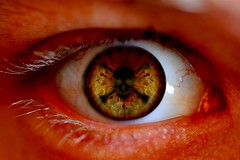 A friend of mine wrote a post pondering the believability of images now that digital capture tools and manipulation programs are so accessible to whomever wants them. Specifically he raised the question also raised by newsweek in this article. Dale went on to ask the question “what about photos of – say – someone committing a crime? Useless in a court of law?”
A friend of mine wrote a post pondering the believability of images now that digital capture tools and manipulation programs are so accessible to whomever wants them. Specifically he raised the question also raised by newsweek in this article. Dale went on to ask the question “what about photos of – say – someone committing a crime? Useless in a court of law?”
I think his concerns were addressed by other commenters, but the question got me to thinking, and that started off what ended up being something of an epic comment of my own, which I’ll repost here to remind me to return to this subject later after a bit more research as it’s quite an interesting issue that Dale has raised.
As #1 and #2 have pointed out, from a digital forensics point of view there are ways to determine if images have been manipulated. HOWEVER… in your hypothetical court case, much like the Olympics, success or failure depends on how well you can cover your tracks, and of course the resources and expertise that the opposing party has access to.
In a domestic situation for instance, I might choose to drop your image into a photo of someone tagging my fence and then proceed to take you to the small claims tribunal for the costs of a repaint. Assuming I’m convincing enough (and not struck down by lightning for trying to scam a man of the cloth), it is unlikely that you would engage forensic expertise to disprove my image, as the costs of doing so would far outweigh the reparation value.
On a more public note, I might create a more convincing series of images of a public figure in a conceivable (but false) situation which is likely to damage their reputation. Now, from here – I can go in a couple of directions, I can either directly seek to blackmail the public figure (in exchange for not making the (fake) images public), or I could just skip to step two and make the images available to the public/media.
The first option is more likely to benefit me directly as hush money would have a good chance being paid for the reason that option two would likely damage the persons reputation due to the simple fact that people have become more lazy as they have been exposed to more information. (Hmm – blog post for me in there somewhere).
People don’t cross check information to the degree they used to, and neither do the people writing the stories. It is because of this shift that people now remember the headline and seldom the retraction – and it is THAT which is dangerous. While a public figure could likely afford to forensically disprove images, by the time they did, the headlines would have run, the speculation would have begun and the trial by media and public opinion would have already tried and convicted the hapless subject – all in the absence of rigorous proof. A retraction or correction would be printed, but as is now par for the course, this would be buried on a page deep inside the offending publication – again, the damage would have been done, there’s no smoke without fire… right? right?! And there’s the reason that we have a responsibility as individuals to be *less* trusting of what we see (the Olympics opening ceremony fireworks being a recent example).
GIMP has extended image manipulation programs into the realm of ‘the rest of us’, Audacity has done the same for audio manipulation. I would hope that open source community will find a way to make the validation of images more accessible for the rest of us, and help restore some our lost innocence… wouldn’t that be nice?
So yeah… something worth thinking about, anyone willing to place bets on how long it’ll take for me to return to this subject?
Comments
One response to “Can we believe our eyes?”
Rob
Can you help or advise …
(I assume you live in NZ from the address)
My daughter has lost access to a data card which contain her oe photos for the last couple of years.
Can you give the name a professional who may be able access the card? Ie tried with no luck.
Regards Peter Howat